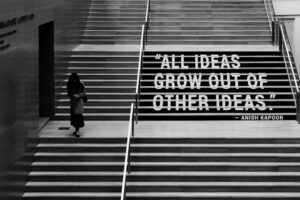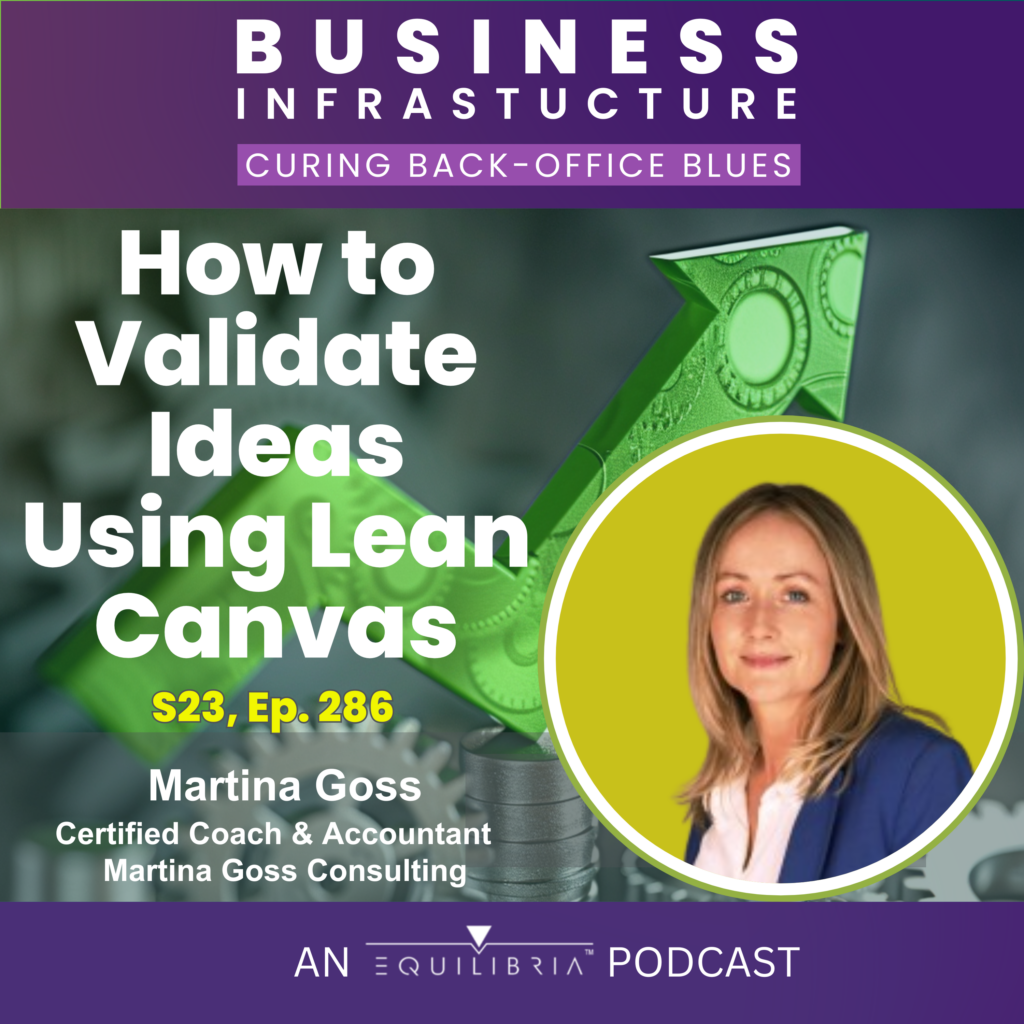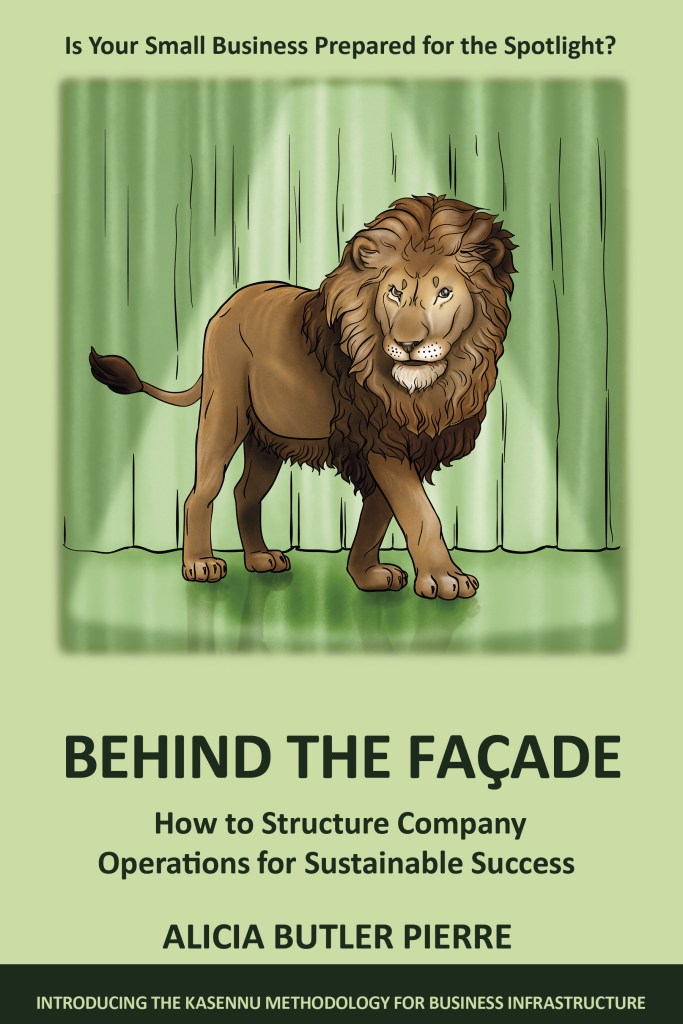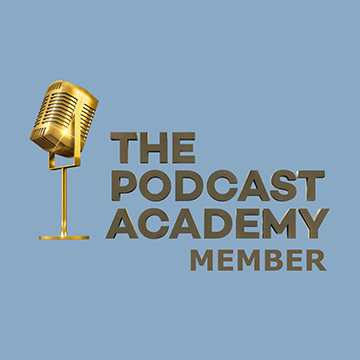Welcome to Season 23 of the Business Infrastructure Podcast – the show where we share operational tips, tactics, and strategies to help you cure any back-office blues you might be experiencing.
In the last episode, you heard me explain how this season is structured – it’s a masterclass on growth strategies. Some episodes will feature a subject matter expert sharing a specific tool to use in developing your company’s growth strategy followed by episodes where I’ll share how my team and I use those tools.

Our first subject matter expert has a strong background in accounting and is no stranger to working with small businesses. In fact, it’s led her to become an expert in helping founders and innovators alike figure out whether their idea is worth pursuing.
As an entrepreneur, you probably have no shortage of ideas on ways to grow and maybe even scale your business. How do you know which ideas are viable versus those that are not?
Well, that’s what you’re about to find out. After all, vetted ideas are needed to develop a solid growth strategy.
This is Ep. 286: Martina Goss Explains How to Validate Ideas Using the Lean Canvas.
Martina Goss. Welcome back to the show! When you first appeared as a guest you shared with us tips for doing business in Ireland. You also shared a bit about the work you do with helping startups as well as existing businesses figure out how to vet and validate some of their ideas using a tool called the Lean Canvas. I can’t wait for you to share more about it!
Hi, Alicia. Thank you so much for having me again. It’s so good to be back with you again for this podcast on growth strategies and have this opportunity, as well as to help your listeners who may be embarking on new ideas and help them get those ideas. So it’s great to be back.
Being that you are an entrepreneur yourself, Martina, I think you will agree when I say that we aren’t “normal.” We don’t function the way those who work for someone else do – our minds are constantly racing with ideas. I’m personally fearful that I’ll forget my ideas if I don’t jot them down somewhere. Can we start there? Where do you recommend we record our ideas?
Yeah, Alicia. There are so many creatives, innovators out there in the world, and their mind could be racing with all these new ideas, new ideas popping into their head every couple of minutes. And sometimes that can be actually quite a challenge and a struggle for an entrepreneur. They’ve got all these ideas and they’re probably trying to figure out which one should they actually follow or focus.
Focus is, as I always say, it’s a gift for an entrepreneur, this ability to get kind of clarity – where should I put my time, money and energy on all these ideas that are racing through my mind? And I suppose this is valid not just for new entrepreneurs. But it can also be for established business owners who may find that they need to create new ideas or new products within their own established business. So the Lean Canvas is a tool that can help you navigate this early landscape of testing new business ideas.

Okay, so the Lean Canvas is a place where we can start to put our ideas. But where or when do we start?
I suppose at any stage. We are living in this new age where there’s huge fundamental changes happening within the world, even from a strategic point of view. When we think about advances in technology, we think about AI, we think about all the sustainability issues that are coming to the forefront that are facing new business owners. So we have to take these ideas and build a strategy around them.
Martina, what exactly is a Lean Canvas?
A Lean Canvas is, in its simplistic form, a one-page business modeling tool that, entrepreneurs or existing business owners can use to help document all their assumptions about their new idea or their new product. When we think about the traditional way of thinking about ideas or business development, it may be to go out to create an elaborate business plan. You could spend days and hours writing business plans, but the Lean Canvas tries to simplify that into a one-page, a four document whereby you have to answer twelve key questions about your idea.
And this gives you an opportunity to start thinking at a more broader scale about your whole business model that will support this potential idea. The Lean Canvas and some of those twelve questions will range from questions from Who’s your customer? What problem do you solve for your customer? Who are you competing against? And also about viability aspects of this business. Like, could you actually create a sustainable business out of this idea?
Listening to you explain what the Lean Canvas is makes it sound fairly simple, Martina. But one thing I know from experience in using it is the ability for bias to creep in. It was tough for me to be objective when answering some of those twelve questions that appear on the Lean Canvas. That’s why we started working together. You offered that objectivity that I knew was missing. I’m curious, who are your typical clients?
I work with many different types of clients. I will work with incubators, so they’d be supporting startups who may have new digital products, physical products. I’ve worked with researchers, scientists who are trying to bring their ideas to life. I’ve also worked with professionals who are trying to move into entrepreneurship. And I’ve worked with established businesses, SME’s, who are trying to reinvent their business model or bring new ideas to life.
As business owners or as an entrepreneur, we might wake up very excited with a new idea. But the problem is that we think that the idea is wonderful, we think that it’s brilliant. We rush to start building our new idea, but we fail to think sometimes of the fundamental principles of business development, which is we have to build a business around a customer, serving a customer and solving a problem for that customer. So using the Lean Canvas is a way to help entrepreneurs think differently about their idea.

And working with someone like you helps us avoid bias.
Working with somebody like me, who’s independent, who’s coming at this from a completely commercial point of view, it creates that distance in a respectful manner, a distance between the entrepreneur and the coach, whereby the coach is trying to help guide the entrepreneur into thinking about the whole business model of their idea and the commercial aspects of it, and even technical as well, to try and keep that entrepreneur on the right path, to give them focus and clarity as to which potential path they should go down with their idea.
The fundamental principle of the Lean Canvas is to fill it out in 20 minutes, and to sit down and to answer these twelve key questions around your business idea. And I suppose an issue that entrepreneurs may have in filling out this Lean Canvas is suddenly they say, “I’m running out of space,” because we’re trying to condense this to one, a four page. So they might find that they don’t have enough room.
But what we’re trying to do is to get them to bring clarity, bring a simplicity as well to their idea to fill out a Lean Canvas in 20 minutes. But as well, as I say, some entrepreneurs might struggle failing at a Lean Canvas because they might actually been trying to incorporate many different ideas onto one canvas, whereby what they actually need to do is create multiple canvases because perhaps they’re trying to solve different problems for different customer segments.
I’m so glad you said that, Martina, because I’m definitely guilty of that. It goes back to the original question of recording ideas. What tips do you have for separating ideas onto different canvases?
the first thing is to present the entrepreneur with a Lean Canvas and just let them, without any guidance complete a Lean Canvas. And this is a very valuable exercise because this canvas is asking you questions you’ve never thought about before. So it’s this process whereby you’re having this realization of all the other commercial aspects that are needed to bring an idea to life or to, to create a viable business. So at a first pass, the entrepreneur can try to complete this Lean Canvas within 20 minutes.
But it’s actually then getting in and digging into their idea, as when we work together as well as a coach, you realize that potentially there’s multiple canvases depending on the customer segment that you’re trying to serve or the problem that you’re trying to solve. The key is to start. We can start with multiple canvases, but go through this process of validation or invalidation such that we could bring one canvas to life so that an entrepreneur could then seek to go out and build a business around either just this one canvas, and you maybe have multiple canvases then in the background that you want to test at a later point as well.

Okay, I’m going to repeat what I heard because it sounds like what you described is a process – 1) write your ideas down somewhere, 2) start transferring those ideas onto a Lean Canvas, 3) set your timer for 20 minutes or so to complete a first draft of your canvas, and 4) let a Lean Canvas expert like yourself, Martina, review the canvas for an objective analysis. From there you may have to separate ideas onto separate canvases. And once that separation occurs, there’s an even deeper analysis that I know you take your clients through. But before you share that, I think now is a good time to describe what the Lean Canvas actually looks like.
Yes! So this is a Lean Canvas, and you can see it’s got nine boxes, but it’s got twelve key questions in the canvas to help you assess the desirability or the viability and the feasibility of your idea. You can start by titling. We have many different ideas, so you could have many different canvases, but at a first pass, you will take the 20 minutes trying to answer these questions. And as we always say, early stage ideas is full of uncertainty. There’s just so many things we don’t know and there’s the saying there’s so many things that we don’t know that we don’t know. So there’s many things that we need to discover through learning. So the canvas asks the twelve key questions.
And these questions will range from your customer segments. So here we’re just asking you at a high level, who do you think you want to serve with this proposed business idea? These are your customer segments. Over here is while we’re thinking about your early adopters. So these are a segment of your customer segment who may be, let’s say, more attuned to adopting your new product or your new solution.
If we think about crossing the chasm and the customer adoption cycle, you know, when you bring a new invention or a new product, new innovation to the market, it follows a curve, the customer adoption curve, whereby at the outset, there’s always going to be a smaller segment of the overall customer segment that might be willing to try or adopt your new product or service. So you start with your early adopters, but ultimately you want to move into the mainstream as well, whereby you need to create a business, not just with early adopters, but also a business that could move into the mainstream. And this is what we would call crossing the chasm.
I’d like to pause for just a moment, Martina, to give a visual explanation of what we are looking at. As you’ve said, the Lean Canvas is a one-page document. The canvas itself is divided into nine total boxes that contain a total of 12 questions. Each box contains a section header for topics like, “Problem,” “Solution,” and “Revenue Streams.” These boxes are designed with enough space to fill them in with your answers to the questions contained in each box.
In the Lean Canvas as well, we have to think about the problems that we solve for our customers. But critically, when we create new businesses or come up with new ideas, we fall so much in love with our solution that we fail to think about potentially problem we solve for our customer. Ash Maurya would call it the innovators bias. It’s where you fall in love with your solution before doing any market or validation work with the market.
But critically, to bring any new product or innovation to the market, we need to understand what are we competing with? This is what we would call our existing alternatives. So you’re trying to come in with a new innovation and displace the existing way that customers get that job done. This is critical for a lot of entrepreneurs who may not think about having to displace something else to get a customer to buy their new product. So this is focusing in on, as I say, a leaner canvas, those four segments.

To clarify, the Leaner Canvas is an abbreviated form if you will of the Lean Canvas. The Leaner Canvas focuses on four of the nine boxes. They are: “Problem,” “Customer Segments,” “Existing Alternatives,” and “Early Adopters.” From a business infrastructure perspective, Martina, if we talk about the people, processes, and tools required to build, grow, and scale a business…you’ve shared details about the Lean Canvas tool as well as the roles you as a coach and your clients play, but can we resume talking about your coaching process? Once a client makes an initial attempt at completing a Lean Canvas, you then begin analyzing that Canvas, right? What happens next?
Yes. So with the Lean Canvas, what will normally happen, as you say, the customer will give an attempt at filling out this Lean Canvas. I can help them by just, I suppose evaluate a Lean Canvas for them to try and help them. I can pose the questions for them that will help them give greater clarity on their Lean Canvas. But ultimately the job that needs to be done is that the customer is the only person, Alicia, that can tell you if your idea is good or not …Will a customer buy this?
So I coach with customers for on average a six-week period. I can offer them critique or I can offer them thoughts on that Lean Canvas. But critically, the job of validation or invalidation is up to the entrepreneur. We spend a couple of weeks business modeling, putting out the different variations of a Lean Canvas or their ideas but then we move into actually going out to talk to customers.
This makes sense. So, if the first stage of the process is completing the Lean Canvas for one specific idea, then the second stage involves talking to existing or potential customers to understand if they agree that the idea is something they’d want and are willing to pay for.
This is customer discovery. Try and understand these four critical points: understanding their customer segment, the characteristics of their early adopters, the problem that they’re trying to solve for their customer and their existing alternatives. We understand quite do problem discovery calls with their customer to bring them to take all the learnings that they learned from that to help the entrepreneur then design a potential solution to solve the problem for the customer.
Also, it is critical to do the problem discovery calls with the customer because this is where you really understand how you can differentiate yourself from the competition, from the existing alternatives. What makes you better? And this is where you will start to learn, and create your unique value proposition so that you can, as I say, bring an innovation to market that is better than the way it is done currently. But critically, you also need to make a viable business out of this.
And from what I remember from working with you on my company’s Lean Canvas is the Innovator’s Trinity: the intersection of an idea’s viability, feasibility, and desirability. That’s when you know you have an idea worth pursuing.

And this is where your revenue streams and your cost structures will come into play. You know, thinking about will your customer pay for? Can you create a profitable business? How will you reach your customers? The channels box, you know, each channels have different costs as well, depending on the channels that you’re using.
Your unfair advantage so that if you do create an innovation that is better than the existing way of doing it, how are you going to defend your position? Your key metrics are really important. These can be metrics that you set for yourself. It can be your ambition, but it can also be every different idea, every different business model has key metrics that drives it. And this is really critical to understand as well, from a viability point of view, for an entrepreneur to understand.
Because the worse thing that can happen is losing money chasing a bad idea. Listening to you, Martina, reminds me of a business friend who invested a quarter of a million dollars in developing a product for people in his industry. He was sure it was something they wanted, and they did, but the problem was that they did not want to pay for it. He ended up having to shut down the entire business.
Yeah, and that actually breaks my heart to hear that, Alicia. And this is why, actually, I want to do what I do is to help people. To save them time, money and energy. I have seen people pump their retirement, into ideas, pump their redundancy money into ideas, or to, you know, to pump it all in, should I say, into ideas, before doing the necessary testing of that business idea. That breaks my heart. So, it’s really important for entrepreneurs to test their ideas, to understand, is this desirable? Does the market want it? Is it viable? Can I create a financially viable business from it? Is it feasible? Can I actually do this? Can this idea move from beyond early adopters into
the wider marketplace? That’s critical.
So, as I always say, every entrepreneur, they have an opportunity cost of their time, money and energy. So, you may wake up with 15 ideas, but, you know, doing one idea means you’re not doing another. So this is why it’s critical to test nearly all 15. Put all 15 out on the table and say, Which one am I going to put a bet on? Which one should you fully go down and commit your time, money and resources building? Which one has the best chance of success? And you really can only do that by doing this necessary testing with the market.
Before we close, I think you’ve covered seven of the nine boxes on the Lean Canvas. The only two left are Revenue and High-Level Concept. Can you summarize what those topics cover?
Yeah, that’s just an analogy, you know, what is your high-level concept? It’s just an analogy that helps people understand your idea, understanding your revenue streams, how you’re going to make money from this. You know, every idea has to be viable. If you have no sales, you don’t have a business. And understanding critically your cost structure.
So understanding costs involve time, bring this idea to life, or, you know, when you’re fully established, really understanding your fixed and variable cost structure of your business, these two can join your revenue and your cost structure. In the middle is your profitability, the difference between these two, but understanding financial viability of it, and then understanding as well how you’re going to fund this idea, which is another question not on this canvas, but another critical component of any new business idea.

Well, Martina, this has been amazing! Do you have any resources that you can share where we can learn more about the Lean Canvas?
I can share a Lean Canvas with you that you can share with your audience. Just try it. If you have that new idea, just give it a go. We’re not looking for perfection. And I’ll also share some articles that I wrote for incubators as well, for early-stage startups embarking on a journey, and how to think about building something that your customers actually want.
Yeah, it’s a great, a great interview for April Fool’s Day. And actually, when we think about. I think of my cousin who always used to say to me when his business, he’d look at me and he’d say, am I just a busy fool? But this is Lean Canvas and this whole idea validation process. So hopefully none of the future generations will be or entrepreneurs will be busy fools.
I remember you telling me the story about one of your cousins who would often ask you, “Am I just a busy fool?” when talking to you about his business. Thanks to the work you do and the Lean Canvas tool for validating ideas we can prevent becoming busy fools! Martina, thank you so much for coming to share your knowledge about the Lean Canvas.
Thank you so much, Alicia. And I hope that this will be of benefit to your audience as well.
Thank you for listening! If you’d like to connect with Martina, then make sure you go to BusinessInfrastructure.TV. there, we’ll have a link to her LinkedIn profile, a Lean Canvas template, as well as a link to another resource she recommends – it’s a book by Geoffrey Moore called “Crossing the Chasm.” Again, you can find all of this information in the show notes at BusinessInfrastructure.TV.
If you enjoyed this episode, then please subscribe, give us a five-star rating and leave us a review.

Now your work begins! That’s right, it’s time for you to complete a Lean Canvas for your business. Join me in the next episode where I’ll share how we worked with Martina to develop a Lean Canvas around an idea we have here at Equilibria.
Be sure to come back to the place wherever you’re listening so you don’t miss this next episode! Until then, remember to stay focused and be encouraged. This entrepreneurial journey is a marathon and not a sprint.
This podcast episode was written and produced by me, Alicia Butler Pierre. Audio editing by Olanrewaju Adeyemo. Original score and sound design by Sabor! Music Enterprises. Video editing by Gladiola Films. A special thank you to our sponsor, Equilibria Inc., and to Grant Revilla for creating the show notes.
This is the Business Infrastructure – Curing Back-Office Blues podcast.

















